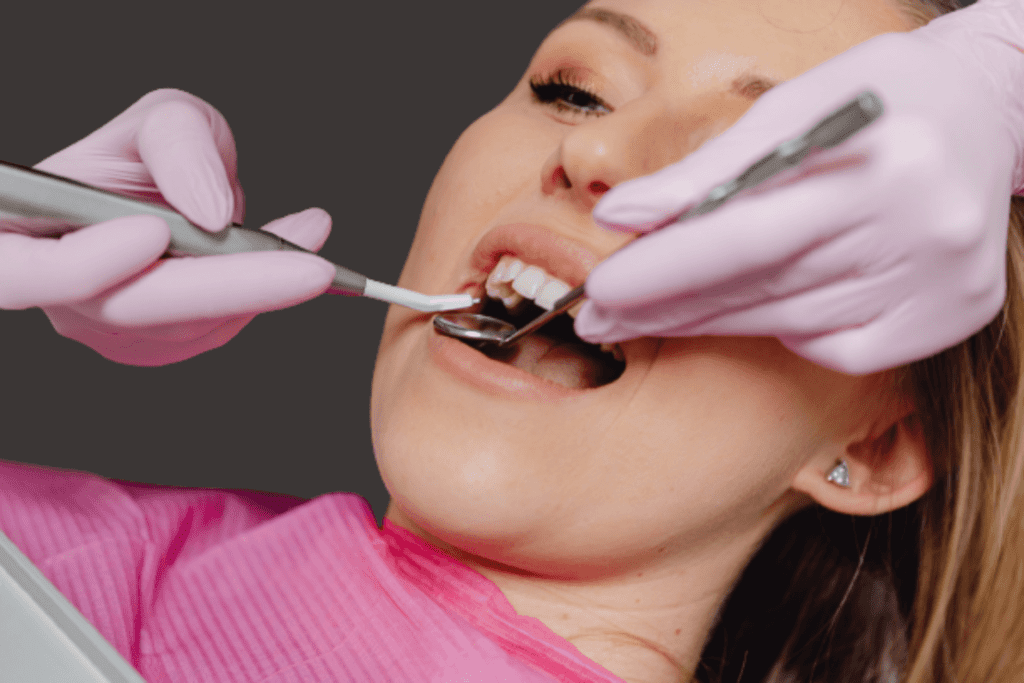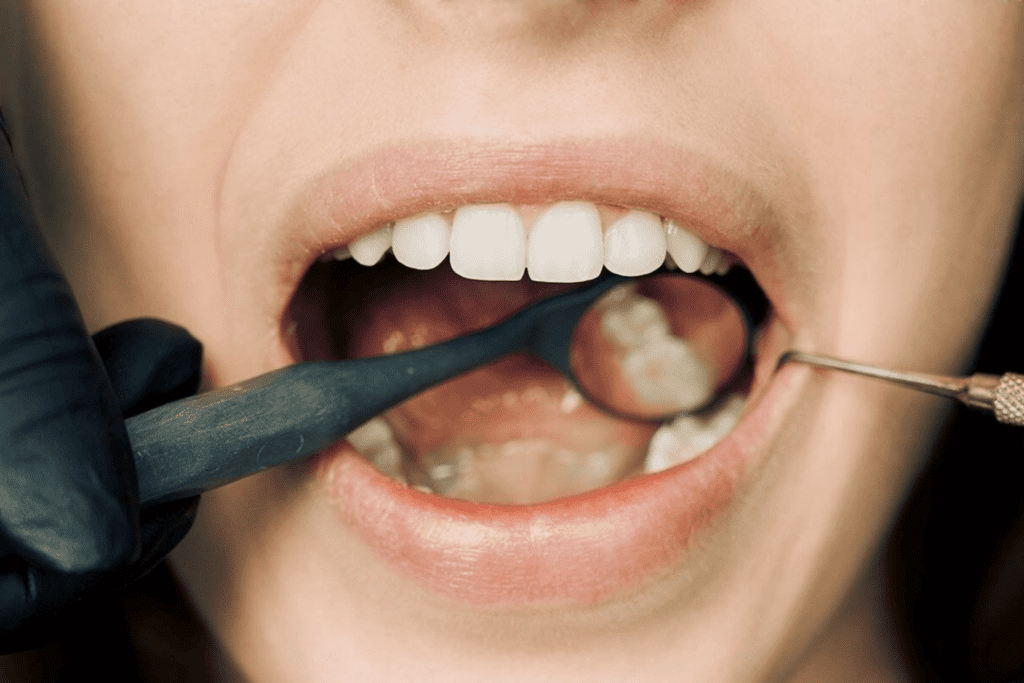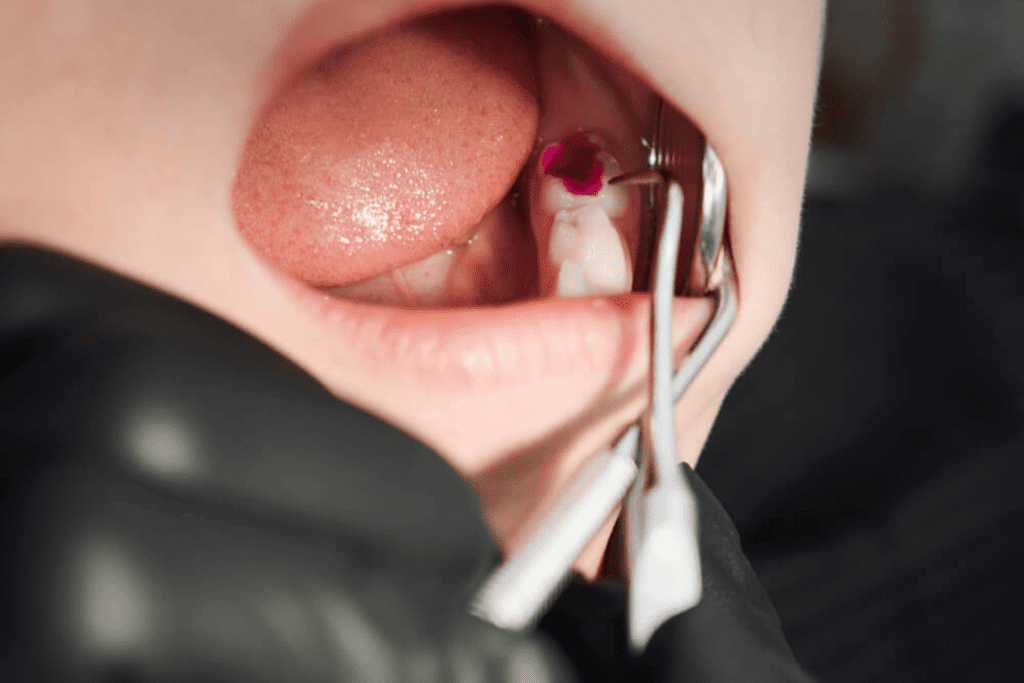Teeth straightening is a dental procedure that aims to correct the alignment and positioning of teeth for improved aesthetics and functionality. It involves the use of various orthodontic techniques and devices, such as braces or clear aligners, to gradually move the teeth into their desired positions. This process helps to correct issues like overcrowding, gaps, crooked teeth, and misaligned bites. By straightening the teeth, the overall appearance of the smile is enhanced, and it can also contribute to better oral health by making it easier to clean the teeth and reducing the risk of dental problems.
Table of Contents
ToggleOptions and Treatments for Teeth Straightening
There are several options and treatments available for teeth straightening. The most common ones include:
1. Teeth Straightening With Braces
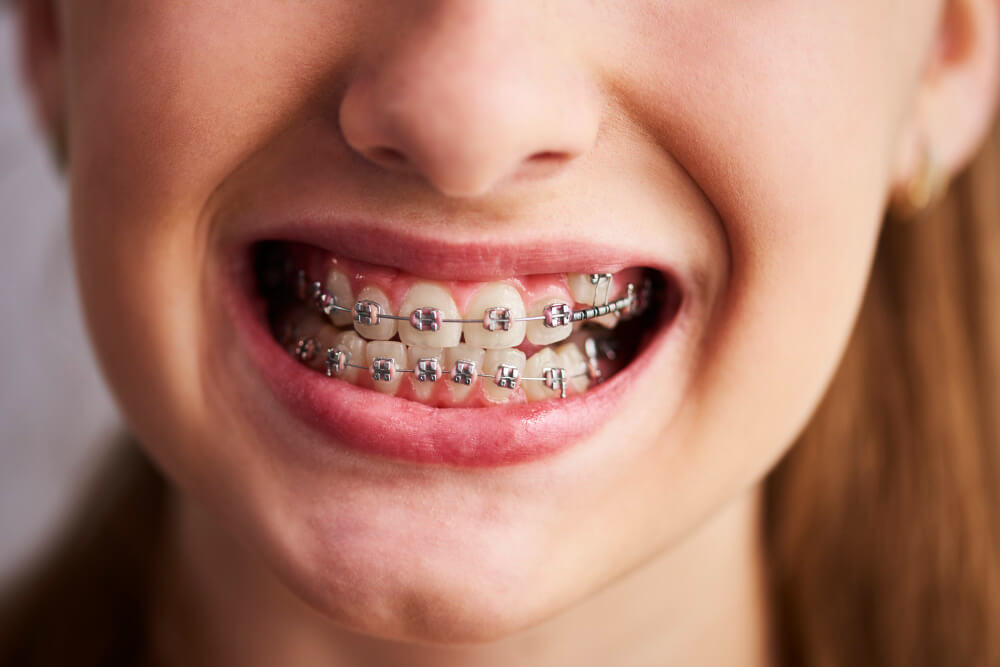
Braces are a well-established and highly effective method for correcting misaligned teeth and jaw issues, known for their ability to gradually shift teeth into their desired positions. By utilizing brackets, archwires, and elastic ligatures, braces work comprehensively to enhance the aesthetics of your smile, improve oral health, and align your bite. With their proven track record, braces provide a reliable solution for achieving a straighter smile and addressing various orthodontic concerns.
Here’s how braces help straighten teeth:
Brackets and Archwires:
Braces consist of brackets, which are small metal or ceramic attachments bonded to the front surface of the teeth, and archwires that run through the brackets. The archwire acts as a guide for tooth movement.
Application of Pressure:
The orthodontist places the archwire into the brackets and secures it with elastic ligatures or self-ligating brackets. The archwire exerts a controlled, continuous force on the brackets and teeth.
Gradual Tooth Movement:
The pressure from the archwire gently pushes and pulls the teeth in the desired direction. Over time, this continuous force causes the bone surrounding the teeth to remodel, allowing the teeth to shift into new positions.
Regular Adjustments:
During your treatment, regular adjustment appointments with your orthodontist will be necessary. These appointments allow the orthodontist to make important modifications to the archwire, such as tightening or altering its shape. These adjustments play a crucial role in guiding your teeth into alignment in a controlled and gradual manner. By carefully managing the tooth movement process through these adjustments, your orthodontist ensures that your treatment progresses smoothly and effectively.
Additional Techniques:
In some cases, additional techniques may be used in conjunction with braces to aid tooth movement. This can include using elastic bands or auxiliary appliances like headgear or palate expanders to address specific alignment or bite issues.
Retention Phase:
Once the desired alignment is achieved, braces are removed. However, it’s important to note that teeth tend to shift back to their original positions. To prevent this, you will enter the retention phase, where you’ll be given retainers to wear. Retainers help maintain the teeth in their new positions by providing stability and preventing unwanted shifting.
The duration of braces treatment varies based on individual factors and the complexity of the case. Regular follow-up visits with the orthodontist are essential to monitor progress, make necessary adjustments, and ensure that the teeth are moving according to the treatment plan. These scheduled visits play a crucial role in tracking the advancement of your orthodontic treatment and ensuring its effectiveness. By closely monitoring the progress and making any needed adjustments, your orthodontist ensures that the treatment progresses as planned and leads to the desired outcome.
Braces Types
There are several types of braces used for teeth straightening. Here are the commonly used options:
Metal Braces:
Metal braces are the most traditional and common type of braces. They consist of stainless steel brackets that are bonded to the teeth using dental adhesive. These brackets are connected by metal wires and held in place with elastic ligatures. Metal braces are highly effective and can be customized with different colored elastics for a more personalized look.
Ceramic Braces:
Ceramic braces are similar to metal braces in terms of design and function. However, the brackets are made of tooth-colored or clear ceramic material, making them less noticeable on the teeth. This makes ceramic braces a popular choice for individuals who desire a more discreet option.
Lingual Braces:
Lingual braces are placed on the back surfaces of the teeth, facing the tongue. They are custom-made to fit the individual’s teeth and are virtually invisible from the front. Lingual braces work similarly to traditional braces, but their placement allows for a more discreet teeth-straightening experience.
Self-Ligating Braces:
Self-ligating braces can be made of metal or ceramic and work without the need for elastic ligatures. Instead, they feature specialized brackets with built-in clips or doors that hold the archwire in place. This design allows for reduced friction, fewer adjustments, and potentially faster treatment times compared to traditional braces.
Procedure
Teeth straightening with braces is a common and effective method used to correct misaligned teeth and jaw issues. Here’s a breakdown of the process:
Consultation:
To begin, it is important to arrange a consultation with an orthodontist. During this appointment, the orthodontist will examine your teeth, take X-rays, and discuss your concerns and treatment goals. They will determine if braces are the appropriate solution for your specific case.
Treatment Plan:
Based on the examination and evaluation, the orthodontist will create a personalized treatment plan. This plan outlines the duration of the treatment, the type of braces to be used, and the expected results.
Braces Placement:
Once the treatment plan is established, the orthodontist will bond the braces to your teeth. The process involves cleaning and preparing the teeth, applying an adhesive to attach the brackets, and securing the archwires onto the brackets using ligatures or elastics. This process is typically painless and takes about one to two hours.
Adjustment Visits:
Once the braces are placed, regular visits to the orthodontist will be necessary for adjustments. During these appointments, the orthodontist will carefully tighten or replace the archwires, applying controlled pressure to guide the teeth toward their desired positions. Typically, these adjustments are scheduled every four to six weeks, ensuring a steady and progressive movement of the teeth throughout treatment.
Oral Hygiene and Care:

Proper oral hygiene is crucial while wearing braces. You will need to brush your teeth thoroughly after every meal and floss daily to prevent plaque buildup and maintain good oral health. The orthodontist may also provide additional cleaning instructions and recommend specific oral hygiene tools, such as interdental brushes or water flossers, to help you clean around the braces effectively.
Duration of Treatment:
The length of treatment with braces varies depending on the individual case. On average, it can take anywhere from one to three years to achieve the desired results. The orthodontist will provide an estimated treatment timeline based on your specific needs.
Retention Phase:
Once the braces are taken off, you will transition into the retention phase of treatment. During this phase, you will be given retainers to wear to maintain the teeth in their new positions. Retainers help prevent teeth from shifting back to their original positions and are usually worn full-time initially, gradually transitioning to nighttime wear.
Risk of Dental Braces
The use of dental braces is generally safe and effective when performed by a trained orthodontist. However, as with any medical procedure, there are potential risks and side effects associated with braces. These can include:
Discomfort:
It is common to experience some discomfort or soreness, especially in the initial stages of wearing braces. This discomfort typically subsides as the mouth adjusts to the braces.
Irritation and Sores:
Braces may cause irritation or sores on the cheeks, lips, or gums. This can be managed with orthodontic wax or other remedies recommended by the orthodontist.
Tooth Sensitivity:
Some individuals may experience temporary tooth sensitivity, particularly after adjustments or when pressure is applied to the teeth. Typically, this sensitivity resolves spontaneously over time.
Decalcification and Tooth Decay:
Improper oral hygiene or failure to maintain good oral care during braces treatment can increase the risk of decalcification (white spots on the teeth) and tooth decay. It is crucial to maintain diligent oral hygiene practices and follow the orthodontist’s instructions for cleaning and caring for your teeth.
Root Resorption:
In rare cases, the roots of the teeth may experience some shortening or resorption during the orthodontic treatment process. This risk is minimized with proper diagnosis, treatment planning, and careful monitoring by the orthodontist.
Allergic Reactions:
Some individuals may have an allergic reaction to the materials used in braces, such as metal alloys or latex. Informing your orthodontist about any known allergies or sensitivities is essential to prevent potential adverse reactions.
TMJ Discomfort:
Temporomandibular joint (TMJ) discomfort or jaw pain can occur in rare instances due to the repositioning of the teeth and jaw during treatment. Your orthodontist will monitor your jaw function and address any issues that arise.
2. Teeth Straightening without Braces
Teeth straightening without braces offers alternative methods to achieve a beautifully aligned smile. While braces are a traditional and effective option, there are now several innovative treatments available that don’t involve the use of traditional braces. From clear aligners to retainers and other orthodontic appliances, these non-brace options provide discreet and flexible alternatives.
Here are a few common options:
Clear Aligners:
Clear aligners, such as Invisalign, are a popular choice for teeth straightening. They are custom-made, clear plastic trays that gradually shift the teeth into alignment. Aligners are removable, nearly invisible, and offer flexibility in eating and oral hygiene routines.
Retainers:
In some cases, minor tooth movements can be achieved with retainers alone. Retainers are custom-made appliances that help maintain the teeth in their new positions after orthodontic treatment. However, they are typically used for minor adjustments or as a follow-up to braces or clear aligner treatment.
Dental Veneers:
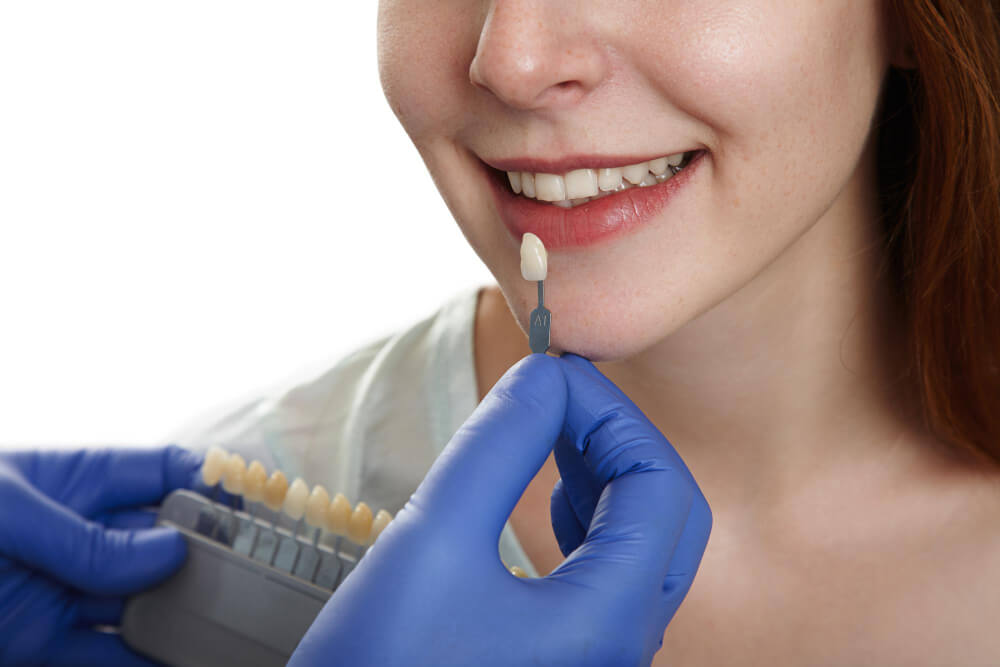
Dental veneers are slim coverings crafted from porcelain or composite resin, designed to be bonded to the frontal surface of teeth. While primarily used for cosmetic purposes, veneers can also be used to improve the appearance of mildly misaligned teeth. However, it’s important to note that veneers only provide a cosmetic solution and do not correct significant orthodontic issues.
Orthodontic Appliances:
Depending on the specific case, certain orthodontic appliances may be used to address tooth alignment. These appliances can include palatal expanders, which help widen the upper jaw, or functional appliances that correct jaw discrepancies and improve bite alignment.
3. Teeth-Straightening Surgery
Teeth-straightening surgery, also known as orthognathic surgery or corrective jaw surgery, is a treatment option for more severe cases of misalignment or malocclusion that cannot be effectively corrected with braces or other non-surgical methods.
Here are some key points about teeth-straightening surgery:
Evaluation and Planning:
Before proceeding with surgery, a thorough evaluation is conducted by an oral and maxillofacial surgeon. This includes taking X-rays, scans, and impressions of the teeth and jaws to assess the alignment and structure. A comprehensive treatment plan is then created based on the specific needs of the patient.
Surgical Procedure:
The surgery is typically performed under general anesthesia in a hospital or surgical center. The surgeon makes incisions inside the mouth to access the jawbones. The bones are then repositioned, reshaped, or augmented to correct the alignment issues. Small screws, plates, or wires may be used to stabilize the newly positioned jawbones.
Recovery and Healing:
After the surgery, patients will have a recovery period that involves swelling, bruising, and discomfort. Pain medication and a special diet may be prescribed during this time. The initial healing process takes several weeks, but complete recovery may take several months. Regular follow-up visits with the surgeon are necessary to monitor progress and address any concerns.
Combined Orthodontic Treatment:
Teeth-straightening surgery is often combined with orthodontic treatment. Before surgery, braces or other orthodontic appliances are used to align the teeth as much as possible. Post-surgery, orthodontic treatment continues to fine-tune the alignment and bite relationship of the teeth.
Benefits and Results:
Teeth-straightening surgery aims to correct severe jaw discrepancies, improve facial aesthetics, enhance bite function, and address associated issues like difficulty chewing or speaking. The surgery can provide long-lasting results and significantly improve both the appearance and functionality of the teeth and jaws.
Teeth-straightening surgery is a complex procedure that requires careful evaluation and planning. It is typically recommended for cases where the misalignment is significant and cannot be effectively corrected with braces or other non-surgical approaches alone. It is important to consult with an oral and maxillofacial surgeon or an orthodontist specializing in surgical orthodontics to determine if this surgical option is appropriate for your specific needs.
Potential Risks
Like any surgical procedure, there are potential risks and complications associated with teeth straightening surgery. These may include infection, bleeding, adverse reactions to anesthesia, nerve injury, jaw joint problems, and changes in sensation or numbness in the facial region. However, such complications are relatively rare and can often be managed effectively by a skilled surgical team.
4. Teeth Straightening Kit
A teeth straightening kit typically refers to a do-it-yourself (DIY) product that enables individuals to attempt teeth straightening at home without the oversight of a dental professional. These kits usually provide materials for taking teeth impressions, which are then sent to a dental lab for the production of custom aligners or other orthodontic devices. The process typically entails the following steps:
Impression Kit:
The teeth straightening kit provides materials and instructions for taking impressions of your teeth. This usually involves biting into a moldable material to create an impression of your teeth and gums.
Sending Impressions:
After taking the impressions, they are typically mailed to a dental lab or directly to the company providing the kit. The lab then uses the impressions to create custom aligners or other orthodontic devices.
Aligner Delivery:
Once the aligners or devices are fabricated, they are sent back to you along with instructions on how to wear and care for them.
Self-Treatment:
The kit typically includes a series of aligners or devices designed to be worn over a specified period. The individual is responsible for wearing the aligners as instructed, usually for a certain number of hours per day or as recommended.
Monitoring Progress:
Some teeth straightening kits offer limited monitoring and support through remote communication or occasional check-ins. However, the level of professional supervision and guidance is significantly reduced compared to traditional orthodontic treatments.
How Much Do Teeth Straightening Treatments Cost?
The cost of teeth straightening treatments can vary widely depending on several factors, including the type of treatment, the complexity of your case, the duration of treatment, the geographical location, and the specific dental provider you choose. Here’s a general overview of the costs associated with different teeth straightening options:
Traditional Braces
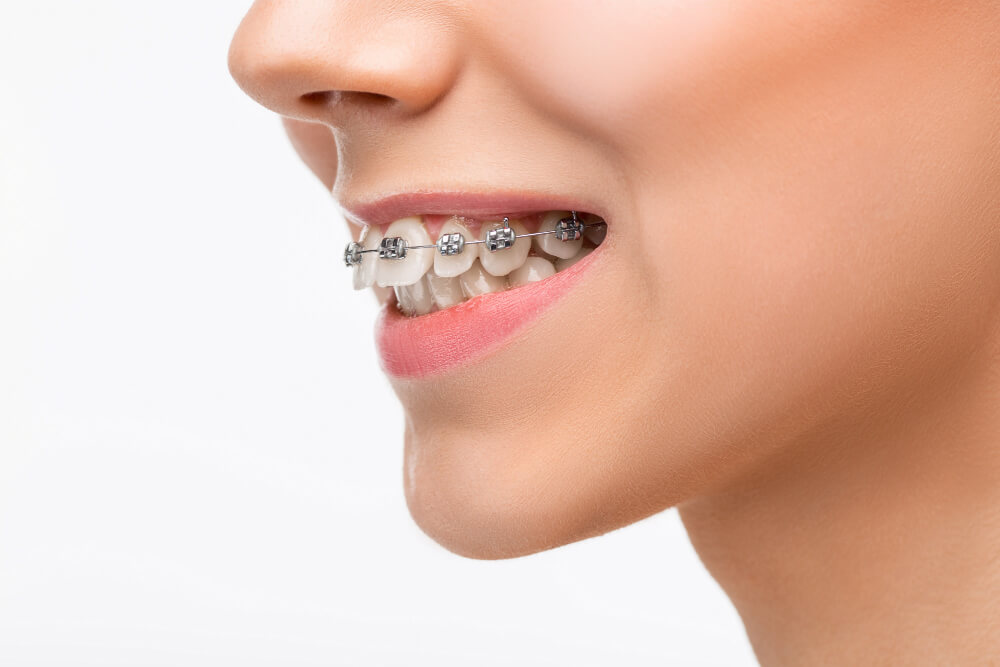
Traditional metal braces are often the most affordable option for teeth straightening. The cost can range from $3,000 to $7,000 or more, depending on the length of treatment and any additional procedures or adjustments required.
Ceramic Braces
Ceramic braces, which are less noticeable than metal braces, tend to be slightly more expensive. The cost may range from $4,000 to $8,000 or more.
Lingual Braces
Lingual braces, which are placed on the back surface of the teeth, are a more discreet option but are generally more expensive than traditional braces. The cost can range from $8,000 to $10,000 or more.
Clear Aligners
Clear aligner treatments, such as Invisalign, are typically priced in a similar range as lingual braces or sometimes slightly higher. The cost may vary from $3,000 to $8,000 or more, depending on the complexity and duration of treatment.
It’s important to note that these price ranges are approximate and can vary significantly. Additionally, additional factors such as consultations, X-rays, retainers, and any necessary pre- or post-treatment procedures may incur additional costs.
To get an accurate estimate of the cost of teeth straightening treatment for your specific case, it’s recommended to consult with an orthodontist or dental professional. They can evaluate your needs, discuss treatment options, and provide you with a detailed breakdown of the costs involved. Many dental offices also offer financing options to help make treatment more affordable by spreading out payments over time.
What is the Right Age for Teeth Straightening?
The right age for teeth straightening depends on several factors, including the individual’s dental development and the specific orthodontic issues being addressed. Here are some general recommendations based on age groups:
Children (7-11 years old)
According to the American Association of Orthodontists, it is advised that children undergo their first orthodontic evaluation around the age of 7. At this stage, potential orthodontic issues like crossbites, crowding, or early signs of misalignment can be identified. Early intervention may be recommended to facilitate proper jaw growth and create sufficient space for incoming permanent teeth.
Adolescents (12-17 years old)
Adolescence is a common time for orthodontic treatment. By this age, most permanent teeth have erupted, and the jaw growth is near completion. Braces or other orthodontic appliances can be utilized to correct misalignment, crowded teeth, bite issues, and other orthodontic concerns.
Adults
There is no age limit for teeth straightening. Many adults seek orthodontic treatment to improve the alignment of their teeth or correct bite issues. The availability of various treatment options, such as clear aligners or ceramic braces, has made orthodontic treatment more appealing and convenient for adults.
Are Teeth Straightening Permanent
Teeth straightening treatments can provide long-term or even permanent results, but it’s important to understand that maintaining the straightened position requires ongoing care and retention. Here’s what you need to know about the permanence of teeth straightening:
Orthodontic Treatment
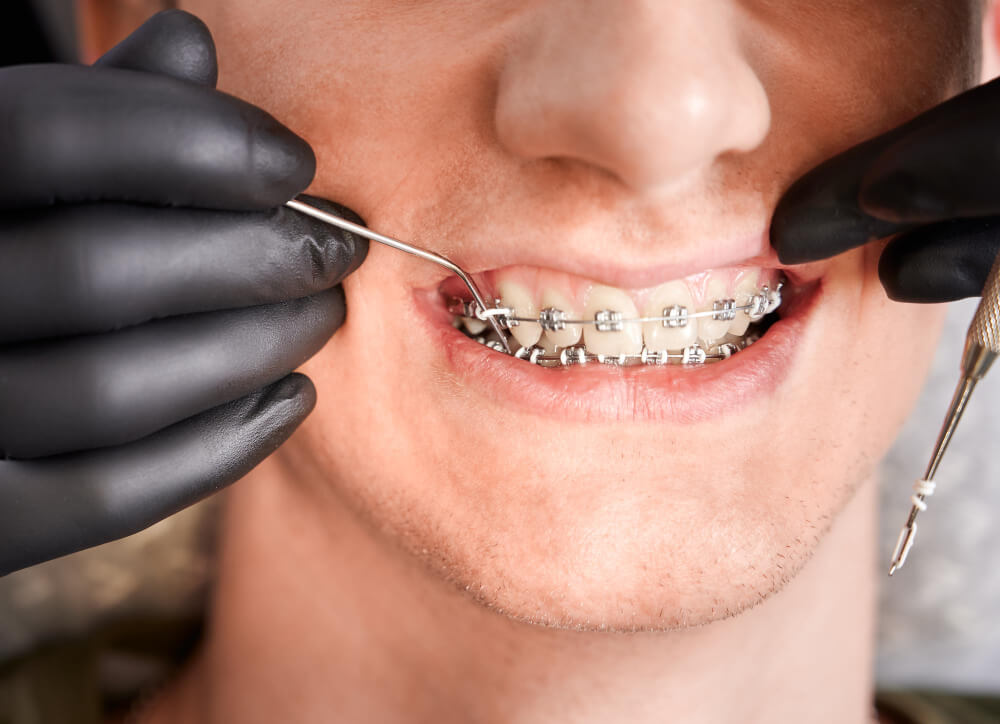
Orthodontic treatments, such as braces or clear aligners, are designed to gradually move the teeth into their desired positions. The treatment duration can vary based on the complexity of the case. Once the treatment is complete and the braces or aligners are removed, the teeth will have achieved a straighter alignment.
Retention Phase
After the active treatment phase, a retention phase follows. During this phase, retainers are typically prescribed to help maintain the new position of the teeth. Retainers can be removable or fixed, and they help prevent the teeth from shifting back to their original positions. Wearing retainers as instructed by the orthodontist is crucial for long-term stability.
Individual Factors
The stability of teeth straightening results can vary among individuals. Factors such as genetics, oral habits, age, and oral health can influence the long-term stability of straightened teeth. Some individuals may naturally have more stable results, while others may experience a tendency for minor relapse over time.
Retainer Wear
Consistent and diligent retainer wear as recommended by the orthodontist is essential for maintaining the straightened teeth. Gradually, the frequency of retainer use may decrease from full-time wear to nighttime wear, but wearing retainers on a long-term basis is usually necessary to prevent significant shifting.
Oral Care and Maintenance
Proper oral hygiene practices and regular dental check-ups are crucial for maintaining the health and stability of the teeth. This includes brushing, flossing, and attending routine dental visits to monitor the condition of the teeth and gums.
Benefits of Straight Teeth
Having straight teeth offers several benefits, including:
Improved Aesthetics
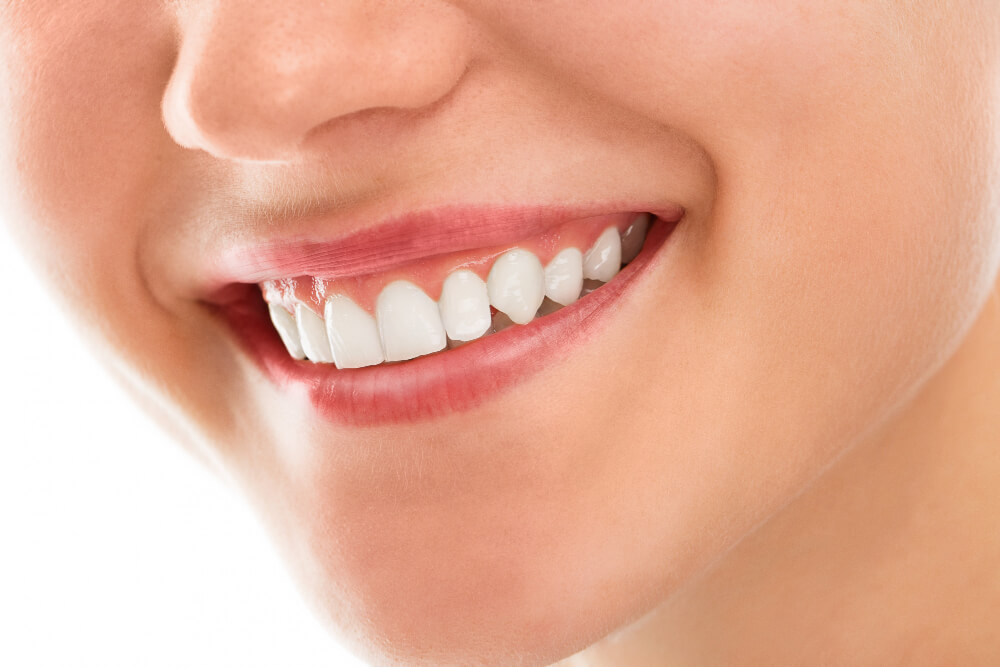
Straight teeth have a positive impact on your smile’s appearance. They can boost your self-confidence and make you feel more comfortable and attractive when interacting with others.
Enhanced Oral Health
Maintaining and cleaning straight teeth is easier and more convenient. When teeth are properly aligned, it’s easier to reach all surfaces with a toothbrush and floss, effectively removing plaque and food particles. This reduces the risk of gum disease, cavities, and tooth decay.
Better Bite Alignment
Misaligned teeth can lead to bite problems, such as overbites, underbites, crossbites, or open bites. These issues can cause uneven pressure on the teeth, jaw pain, and discomfort while eating. Straightening the teeth helps to align the bite properly, ensuring that the teeth fit together harmoniously and reducing strain on the jaw joints.
Speech Improvement
Misaligned teeth can affect your speech patterns and pronunciation. Certain sounds, like “s” or “th,” may be difficult to articulate correctly. By straightening your teeth, you can improve the position of your tongue and lips, enabling clearer speech and better pronunciation.
Reduced Risk of Dental Injuries
Teeth that protrude or are misaligned are more susceptible to injuries during accidents or sports activities. By straightening your teeth, you can align them within the jaw, reducing the risk of dental trauma and protecting them from potential damage.
Overall Oral Comfort
Crooked or misaligned teeth can cause discomfort and pain. They can strain the jaw joints and surrounding muscles, leading to headaches, jaw pain, and even neck and shoulder pain. Straightening the teeth can alleviate these issues, promoting overall oral comfort and reducing discomfort.
Long-Term Cost Savings
Addressing dental issues early and straightening your teeth can help prevent more severe problems from developing in the future. For example, correcting misaligned teeth can prevent excessive wear, tooth fractures, and gum problems that would require more extensive and costly treatments down the line.
FAQ
Are Teeth Straightening Only for Cosmetic Purposes?
No, teeth straightening serves both aesthetic and functional purposes. While it can enhance your smile, it also improves oral health by making teeth easier to clean, reducing the risk of dental issues, and improving bite alignment.
Can Adults Get Their Teeth Straightened?
Yes, adults can get their teeth straightened. There is no age limit for orthodontic treatment, and many adults seek teeth straightening to improve their smile and address dental issues.
How Long do Teeth Straightening Treatment Take?
The length of teeth straightening treatment varies depending on the complexity of the case and the specific treatment method chosen. On average, treatment can span from several months to a few years.
Do Teeth Straighten Hurt?
Discomfort and soreness are common during the initial stages of teeth straightening treatment and after adjustments. However, the level of discomfort is typically manageable and diminishes over time.
Are there Alternatives to Traditional Braces?
Yes, there are alternatives to traditional metal braces, such as ceramic braces, lingual braces (placed on the back of the teeth), and clear aligners like Invisalign. The suitability of these options depends on the individual’s specific needs and the recommendation of an orthodontist.
Can I Eat Normally with Braces or Aligners?
Certain dietary restrictions may apply when wearing braces to prevent damage to the appliances. However, clear aligners are removable, allowing you to eat without restrictions by simply removing them during meals.
How do I Maintain Results After Teeth Straightening?
Retention is a crucial phase after teeth straightening treatment. It involves wearing retainers as directed by your orthodontist to maintain the results and prevent teeth from shifting back to their original positions.
Can Teeth be Straightened Without Braces?
In some cases, minor tooth movements can be achieved with aligners or retainers alone. However, for more complex cases, braces or orthodontic appliances may be necessary to achieve the desired results.
Will Insurance Cover the Cost of Teeth Straightening?
The extent of insurance coverage for teeth straightening treatment varies depending on the insurance plan. It is advisable to check with your insurance provider to determine the coverage available for orthodontic treatment.
Can I get teeth straightening treatment if I have other dental issues?
Teeth straightening treatment can often be combined with other dental treatments. Your orthodontist will work in conjunction with other dental professionals to address any other oral health issues you may have during the treatment process.
Conclusion
In conclusion, teeth straightening is a beneficial treatment that offers numerous advantages, including improved aesthetics, enhanced oral health, better bite alignment, and speech improvement. It can also provide long-term cost savings by preventing more severe dental problems. The options for teeth straightening include traditional braces, ceramic braces, lingual braces, clear aligners, and orthodontic appliances. Teeth straightening treatments should be carried out under the guidance of a dental professional to ensure safety and effectiveness. Ultimately, consulting with an orthodontist or dental professional is key to determining the most suitable treatment plan based on individual needs and goals.
Read Next: Teeth Discoloration: What You Need to Know
Resources
Image Designed by Freepik
References
https://www.ncbi.nlm.nih.gov/books/NBK553375/
https://www.ncbi.nlm.nih.gov/books/NBK553378/
https://www.ncbi.nlm.nih.gov/pmc/articles/PMC6343314/
https://progressinorthodontics.springeropen.com/articles/10.1186/s40510-022-00453-0
https://www.ncbi.nlm.nih.gov/pmc/articles/PMC7018497/
https://www.news-medical.net/health/Risks-of-Dental-Braces.aspx


